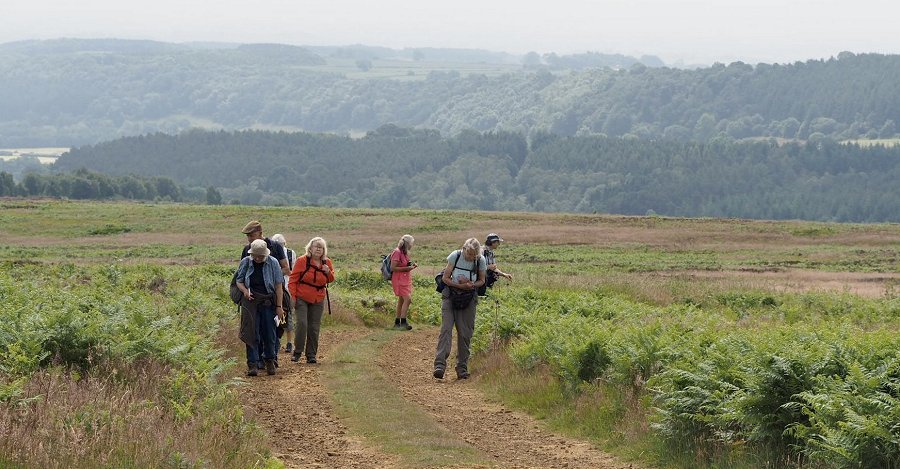

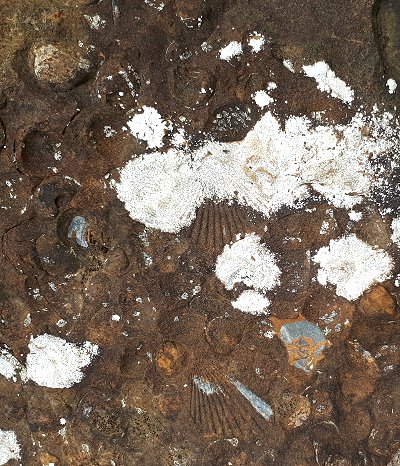 This trip was postponed from last year becuase of Covid. We were very happy to welcome our friends from Hull Natural History Society for a joint meeting. We met at the old quarry near Cross Farm. This alone contained some 40 species of plants – and an interesting stone slab containing numerous shell fossils (left). The route we followed included a good variety of habitats (acid moorland, verges including a lime-rich area, bog, wood edge, beckside and marsh) which meant we recorded over 200 plant species – not bad for one day.
This trip was postponed from last year becuase of Covid. We were very happy to welcome our friends from Hull Natural History Society for a joint meeting. We met at the old quarry near Cross Farm. This alone contained some 40 species of plants – and an interesting stone slab containing numerous shell fossils (left). The route we followed included a good variety of habitats (acid moorland, verges including a lime-rich area, bog, wood edge, beckside and marsh) which meant we recorded over 200 plant species – not bad for one day.
After investigating the quarry we made a short diversion down the (thankfully quiet) road to examine the interesting verges, where the lime in the roadstone had influenced the botany. We managed to identify both common and large wild thyme: interestingly in the field the easiest id character was the scent – very much stronger in the “large” species, actually more or less the same size but a little more upright. In a similar vein it was great to be able to compare red clover and zigzag clover.
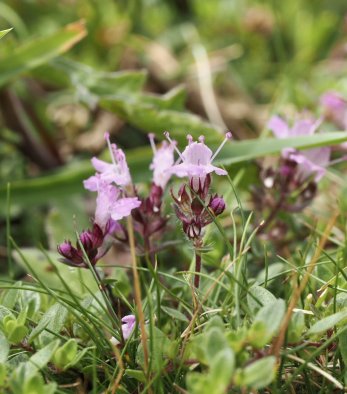 Wild thyme (sp.) |
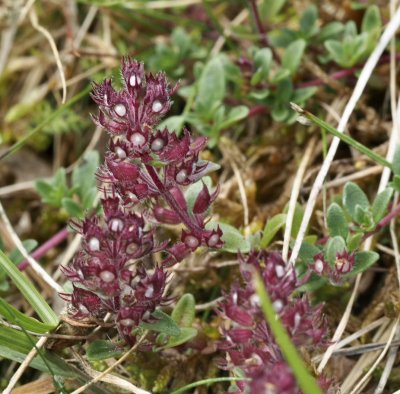 Wild thyme (I think this is the larger one, with hairs on the stem angles) |
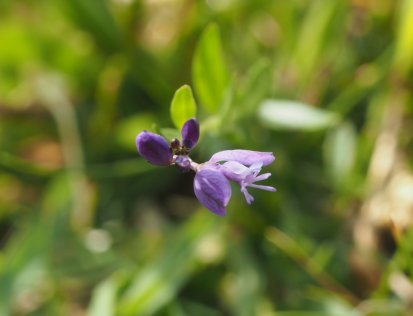 Common milkwort |
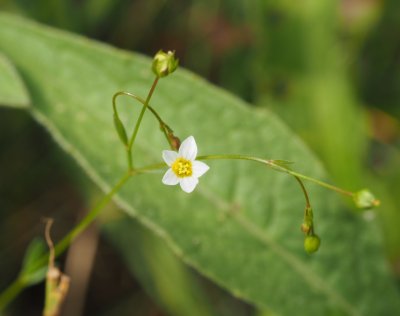 Fairy flax |
We then walked across Harland Moor, past the reservoir and on via the White House (only the footings remain) towards Rudland Rigg. visiting an interesting wet area with sphagnum, sundew, bog asphodel and heath spotted orchids. The moor was much drier than usual for the time of year, but this small bog still held standing water.
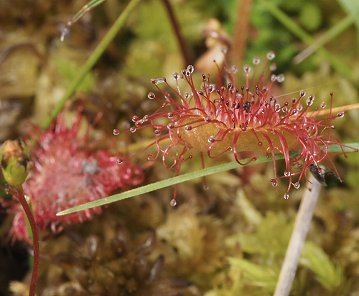 Sundew leaves – the sticky droplets catch insects |
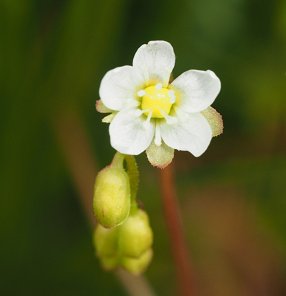 Sundew produces pretty white flowers in summer |
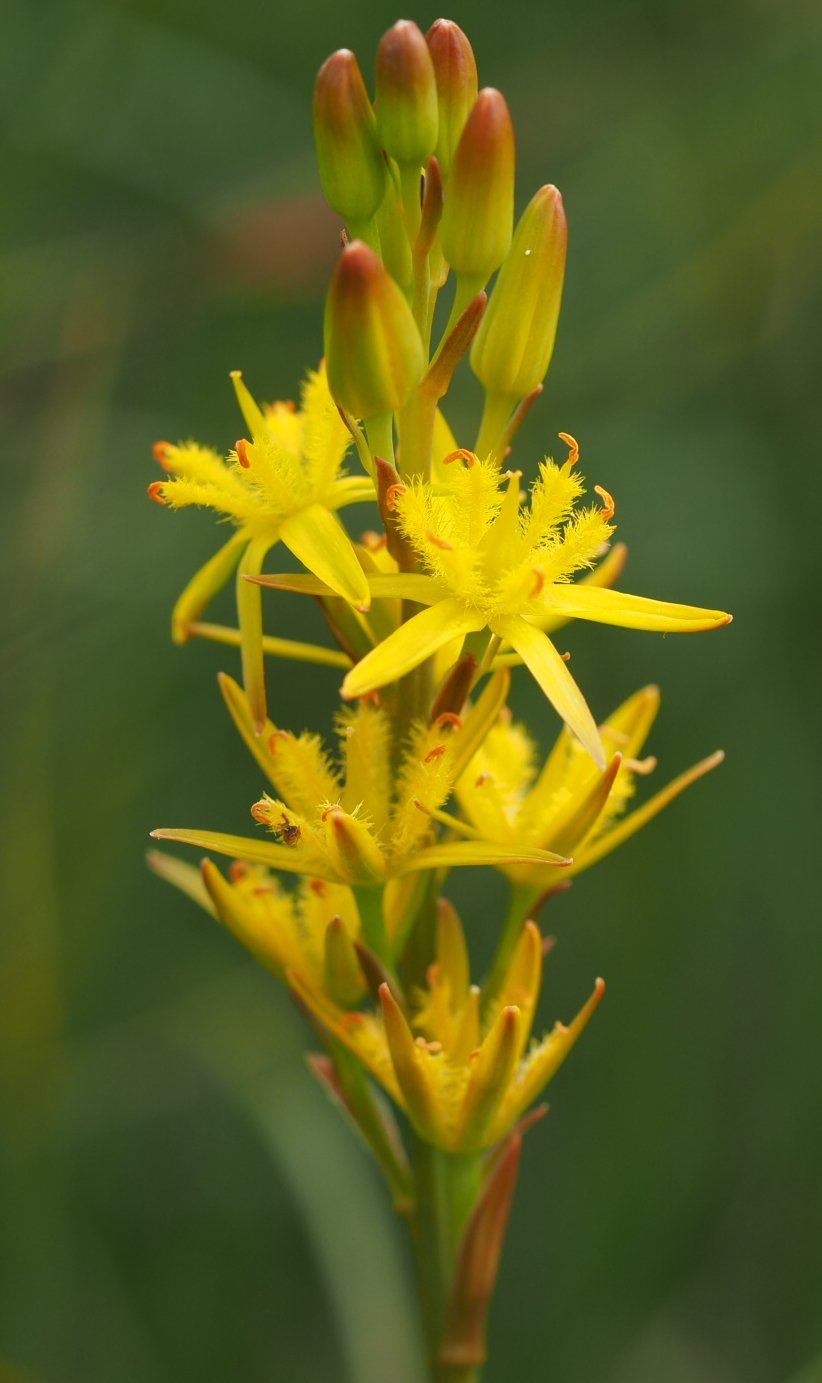 Bog asphodel |
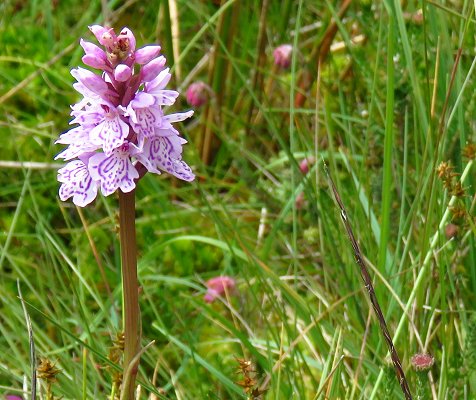 Heath Spotted Orchid |
We were delighted to see a swathe of cow wheat flowering well on the acid soils near the beginning. It seemed to grow preferentially with wavy hair-grass – perhaps this is its host as I believe it (the cow wheat) is semi-parasitic.
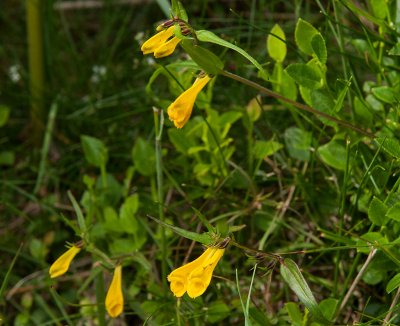 Cow wheat |
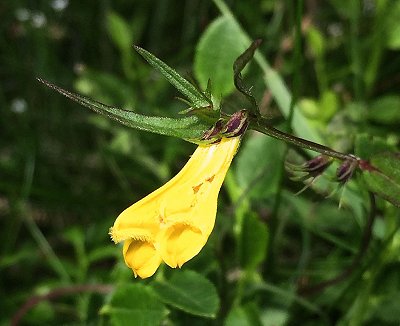 Cow wheat (detail) |
Possibly the find of the day was chickweed wintergreen, sadly not quite in flower but with a couple of thread-like stalks bearing buds. It grows in a small patch under bracken beside the track and took some finding even though we knew where it should be! It also proved impossible to get a photo of it.
After investigating the (acid) bog we headed towards Rudland Rigg and stopped for lunch beside a small sandstone quarry, on very short turf grazed by both sheep and rabbits. Here the plants were dwarfed, with species such as self heal and yellow trefoil flowering at about half an inch tall. There was also knotted pearlwort and lesser hawkbit here. In the trackside ditch we found New Zealand willowherb; if this was not in flower I don’t think you would know it was a willowherb as it grows low to the ground with small round leaves quite unlike our native varieties.
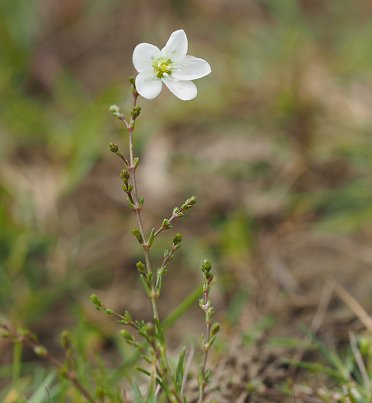 Knotted pearlwort – with very small “knots” of leaves | 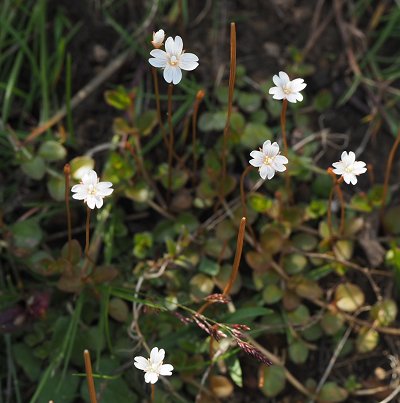 New Zealand willowherb |
We then joined the Bransdale road for a short stretch – where there is lime in the soil and the verges have an interesting variety of plants including spurge laurel, hoary plantain, quaking grass and some very fine twayblades, before turning back over the moor near Allotment House, dropping down to cross Harland Beck and returning to the cars. There is an interesting marshy area near the beck where we found marsh pennywort, bog pimpernel, and a delightful tiny water crowfoot that we id’d as ivy-leaved water crowfoot.
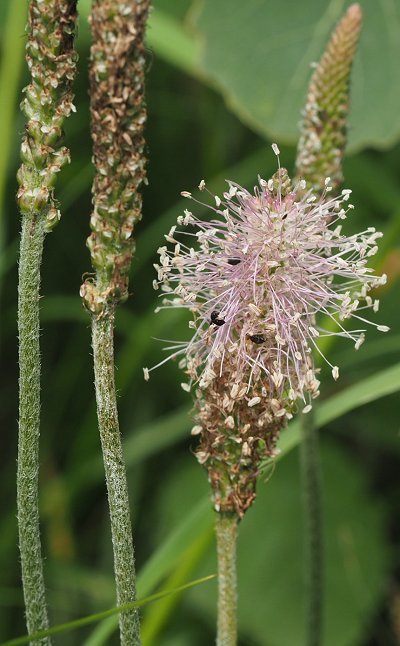 Hoary plantain |
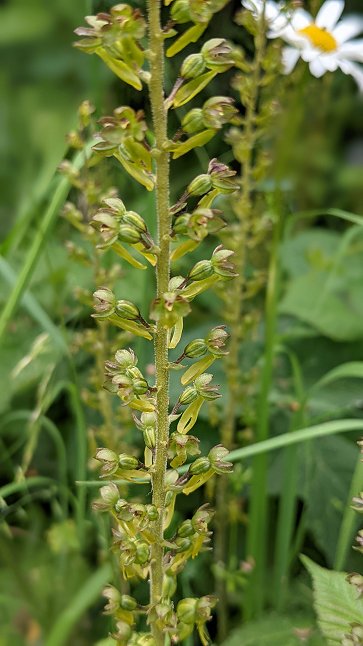 Twayblade |
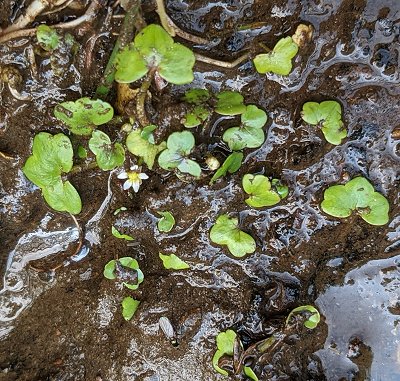 Ivy-leaved water crowfoot |
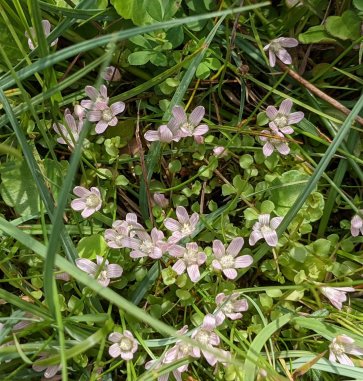 Bog pimpernel |
In addition to over 200spp. of plants we saw or heard 24 birds and several interesting insects. Many thanks to Africa Gomez from Hull Nats for these lists and comments.
“It was good to see meadow pipits’ success, as several fledglings were seen. Raptors in grouse moors are notable and we did see a number of kestrels and buzzards. Hearing and seeing Curlews was also a highlight.
The beetles were unusual and two were new for me, the Welsh Chafer and Thanatophilus rugosus (a carrion beetle).”
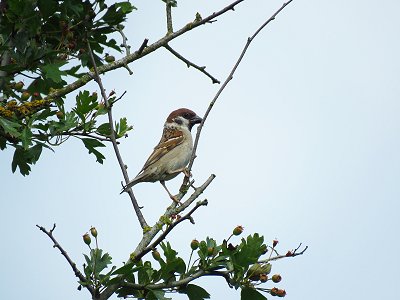 Tree sparrow with food |
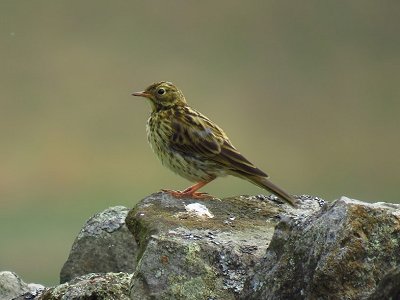 Meadow pipit |
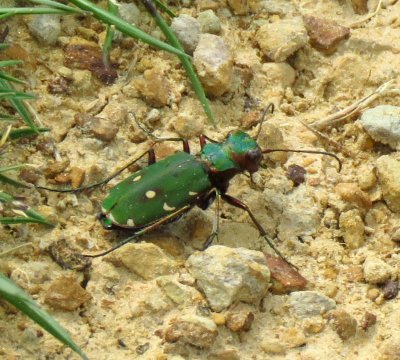 Green tiger beetle |
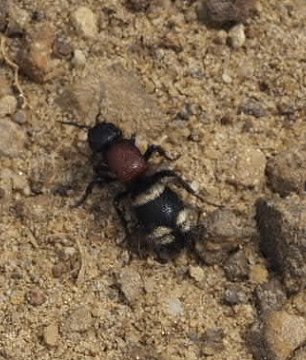 Velvet ant |
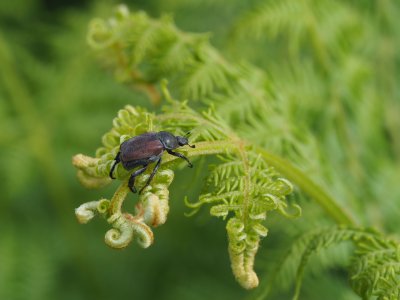 Welsh Chafer on bracken |
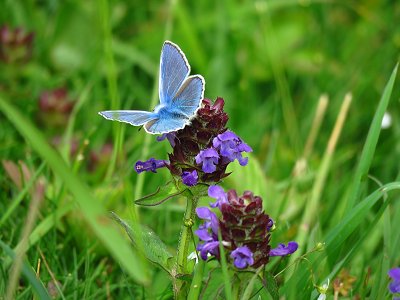 Common blue butterfly on self heal |
She also took many superb photos on the day which you can see here
Thanks to Africa Gomez for the birds and insects. [Note you may need to scroll down inside the frame to see all the entries - Ed]
List compiled by Margaret Reynolds and Gabrielle Jarvis.
There are more photos here and here.
| © Ryedale Natural History Society 2021, Photos © Africa Gomez, Jordan Protano-Byrne, Andrew Chadwick and Gill Smith 2021 |